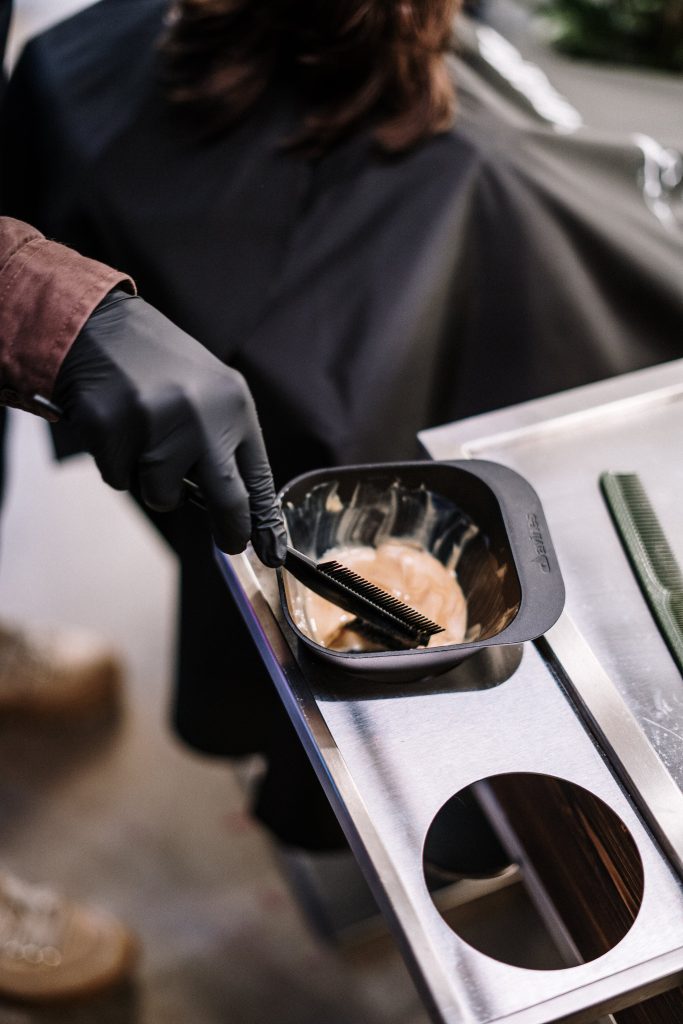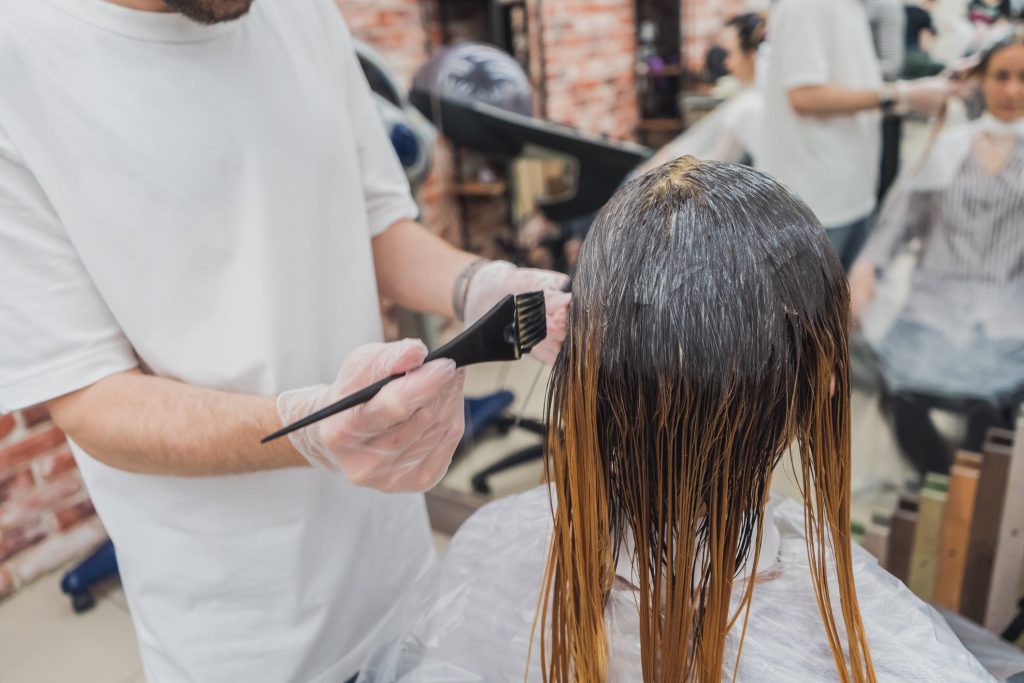Shielding Your Hair from the Sun
Excess sun exposure doesn’t just damage skin – it also takes a toll on your hair. The sun’s UV rays cause dryness, brittle strands, fading color, and even increased split ends when your hair is unprotected. To avoid hair damage and keep your locks healthy and vibrant through the sunny seasons, be proactive about shielding your hair from sunlight.
Wear Protective Headwear
The easiest way to provide a literal barrier between your hair and the sun is by wearing headwear when outdoors. Wide-brimmed hats offer the best coverage, shading not just the hair strands but also the scalp itself. Lightweight baseball caps or visors are another option, although the hair will still catch some direct light. Look for hats, caps, or hoods made from tightly-woven fabrics – you want them to block rays instead of allowing sunlight to penetrate the weave.

Apply Sunscreen
Just as you’d use sunscreen on skin, there are specially formulated products to shield hair from sun damage. Look for a lightweight spray made specifically for hair and containing ingredients like silicones, natural oils, and humectants that won’t leave hair greasy or weighed down. Aim for a formula containing UV filters for absorbing rays – common ones used are benzophenone-4, octocrylene, Avobenzone or zinc oxide. Antioxidants in the formula add an extra layer of photo-protection. Be sure to apply the sunscreen all over your dry hair, not just the top or crown to fully protect. Reapply after swimming or heavy sweating.
Style Hair Strategically
How you style your hair makes a difference for what parts of it will be more prone to sun exposure. Any technique that tucks hair securely under a hat or hood offers maximum shielding ability. For loose hair, try braids, buns, or updos versus leaving it all hanging loose and flying about in the breeze. Be sure to use styling products containing sunscreens as well. Products like leave-in conditioners and serums create another protective barrier from damaging rays.
Deep Condition Frequently
Even if taking preventative steps, hair still ends up with some cumulative sun damage from usual summer activities. Using an intensive deep conditioning hair mask at least once a week in summer can help restore moisture and smooth damage from sun, chlorine and saltwater exposure. Leave the treatment on under a shower cap for 15-30 minutes allowing the rich oils and humectants to fully penetrate the hair shaft before rinsing out. Hair will emerge softer and shinier.
Save chemical hair treatments for winter months when your locks are tucked safely out of the sunlight. But by shielding your hair properly all summer long, you’ll still have healthy, vibrant hair no matter what fun-in-the-sun activities the season may bring.

Protecting Your Hair from Salt and Chlorine
Summer often means fun at the beach and poolside. But all that time spent in saltwater and chlorine can do a number on your hair, leaving it dry, brittle, and stripped of healthy oils and color. The combination of salt, chlorine, and sun’s damaging rays makes hair extremely vulnerable during swimming season. Take proactive steps to shield your locks to keep them looking lush post-summer.
Cover Up
Before any ocean or pool dip, coat wet hair with a protective barrier of conditioner. For extra protection, put on a formfitting swim cap. Choose latex or silicone caps that fully contain all your hair, tucking every strand inside. Some caps have extra room to apply a conditioning treatment inside the cap itself. The layer of conditioner coupled with a tight cap prevents the majority of water from penetrating the hair shaft.
Rinse ASAP
After swimming, rinse out hair with fresh water as soon as possible. This removes any salt, chlorine residue, and minerals that may start to dry out strands. Pack a shower cap for an impromptu rinse at outdoor showers, or use a portable rinse bottle filled with distilled water. Freshening up post-swim prevents compounding chemical damage over time spent lounging poolside. Be sure to gently comb through hair with a wide-tooth comb while rinsing to remove any tangles without tugging.

Replenish Moisture
Frequently shampooing hair post-swim can lead to even more dryness. Instead, focus on using moisturizing leave-in conditioners and masks a few times a week. Look for nutrient-rich formulas containing hydrating oils and humectants to bind moisture to hair. Target conditioners to the most distressed areas like ends and layers that sustain the most damage from environmental exposure. Deep conditioning also smooths hair cuticles ravaged by chlorine and salt making tangles and breakage less likely.
Protect Color
Chlorinated water strips vibrant color treating hair like a sponge leaching out pigment. Coast hair with leave-in conditioners specifically designed for color-treated hair before swimming. Post-rinse, use color-protecting shampoos and conditioners containing UV filters as part of your next wash routine. Avoid shampooing too frequently – allow natural hair oils to replenish first whenever possible. Get regular trims to snip away the most distressed ends prone to fading.
Shampooing and Conditioning Color-Treated Hair
Coloring your hair adds vibrancy and dimension, but also requires some special care to keep hues bright between salon visits. The right shampooing and conditioning routine helps lock in color, boost shine, and prevent fading caused by water minerals and sun exposure. Follow these tips for maintaining fresh, healthy color-treated hair.
Choose Sulfate-Free Shampoos
Sulfates are harsh detergents that strip hair of nourishing oils that protect and reflect color. Opt for a gentle, sulfate-free shampoo that won’t cause color to fade quickly. Look for moisturizing formulas with natural ingredients like antioxidants, proteins, aloe vera, and botanical extracts. Shampoo just 1–2 times per week max, only applying to the scalp which avoids scrubbing color off the strands.
Use Cool Water
Wash color-treated hair with the coolest water temperature you can stand. Hot water opens pores in the hair fiber allowing color molecules to escape. Cooler water helps seal the cuticle flat, so color stays locked in. Give hair a final quick rinse with cool water after shampooing and conditioning. Avoid harsh spraying during washing which can damage cuticles leading to fading.
Condition Strategically
Conditioner should only be applied to hair mid-length to ends, avoiding roots. Only shampoo roots to remove product buildup and oil so scalp stays fresh between washes. Hydrating masks and leave-in conditioning treatments help prevent dryness and breakage. Look for color-safe formulas containing sunscreen filters, olive oil, shea butter, and strengthening keratin.

Blot Hair Dry
Vigorously rubbing hair with a towel creates friction that lifts color off strands. Gently squeeze out excess moisture then wrap hair in a dry towel allowing it to passively blot instead. Avoid brushing wet hair as it’s in a fragile state. Use a wide-tooth comb or fingers to gently detangle once dry. This prevents breaking strands leading to split-ends.
With the proper maintenance routine, your hair color will stay vibrant for many washes, allowing you to go longer between pricey trips to the salon!
Let me know if you have any suggestions for improving or expanding this draft article on caring for color-treated hair. I’m happy to refine it further.
